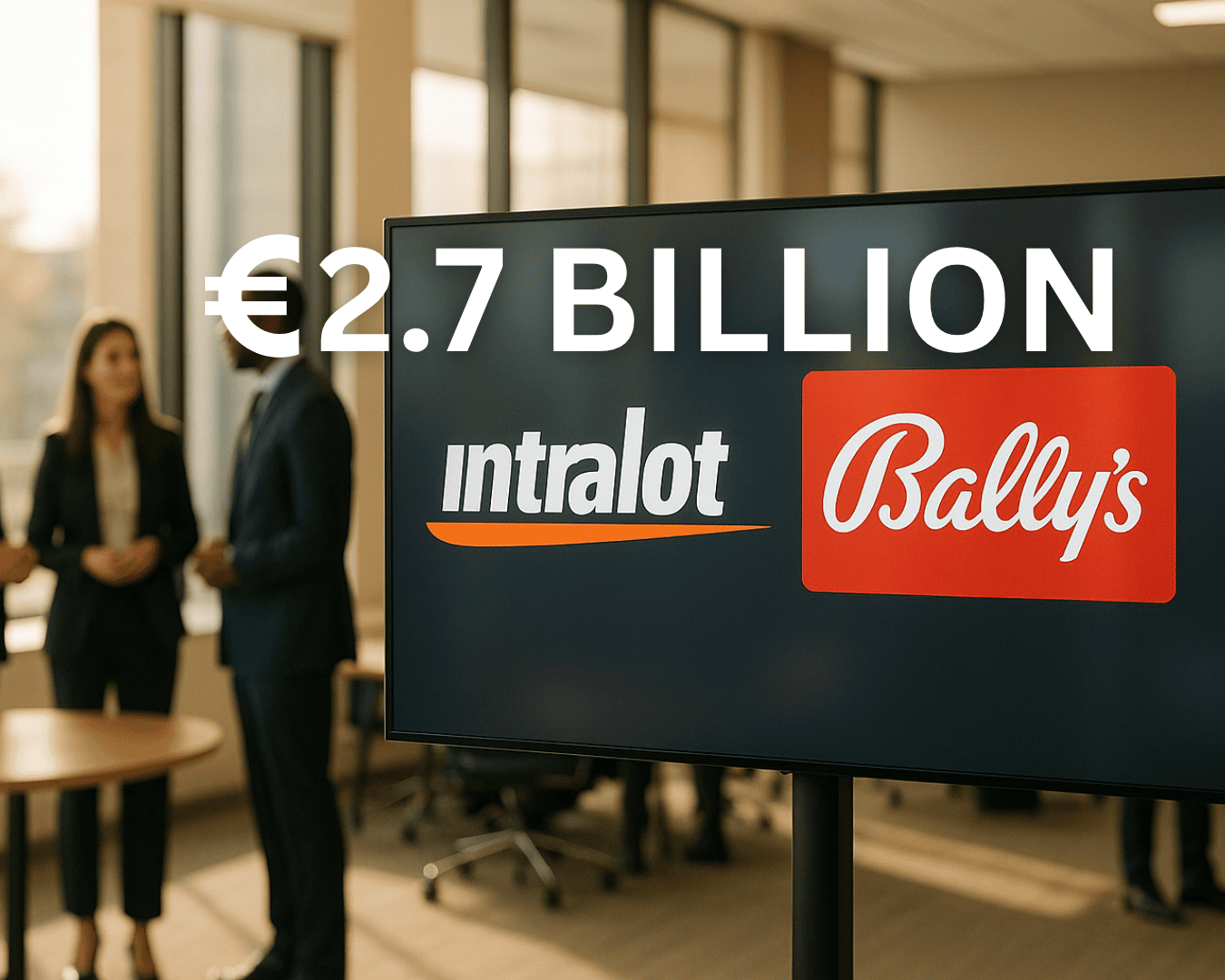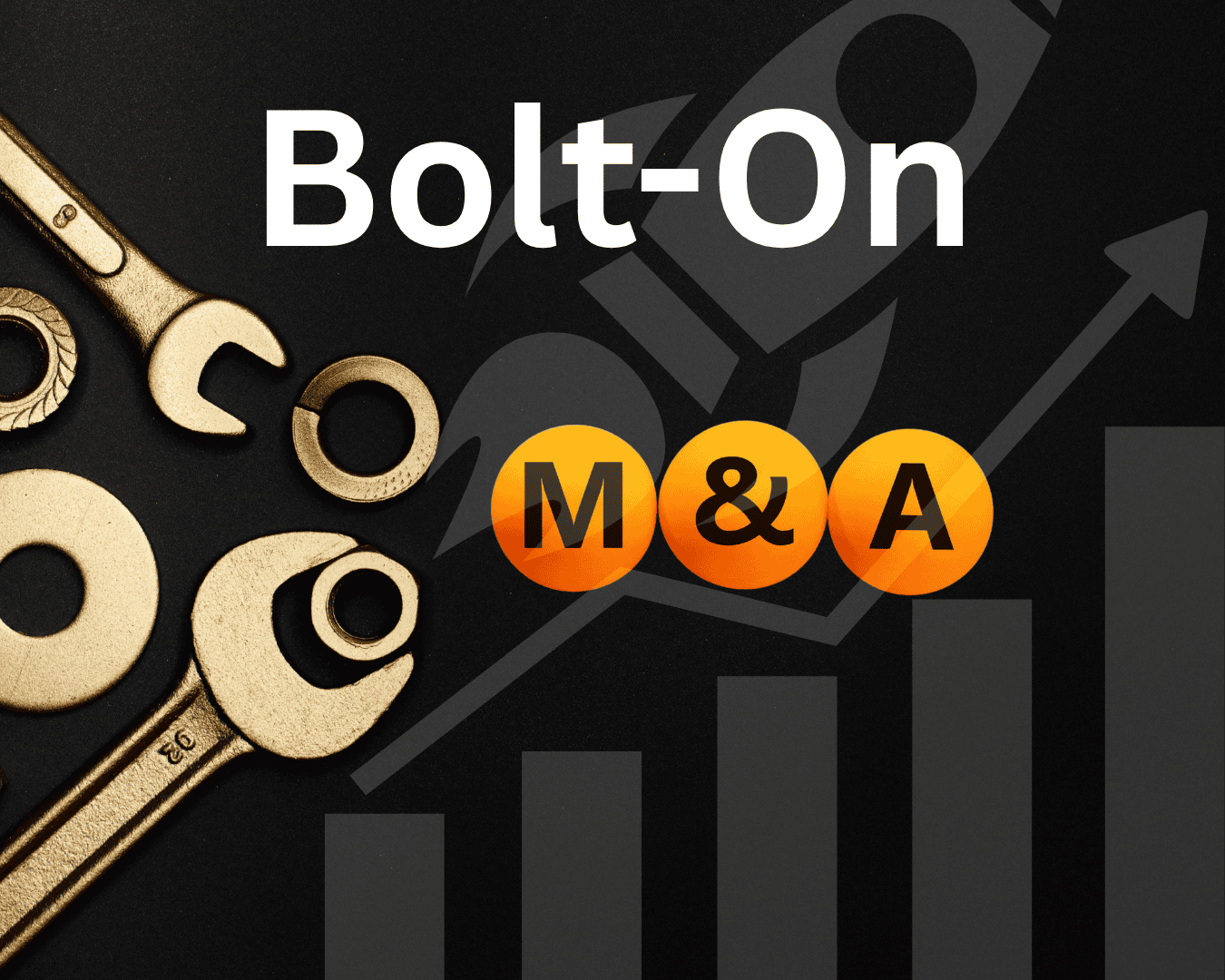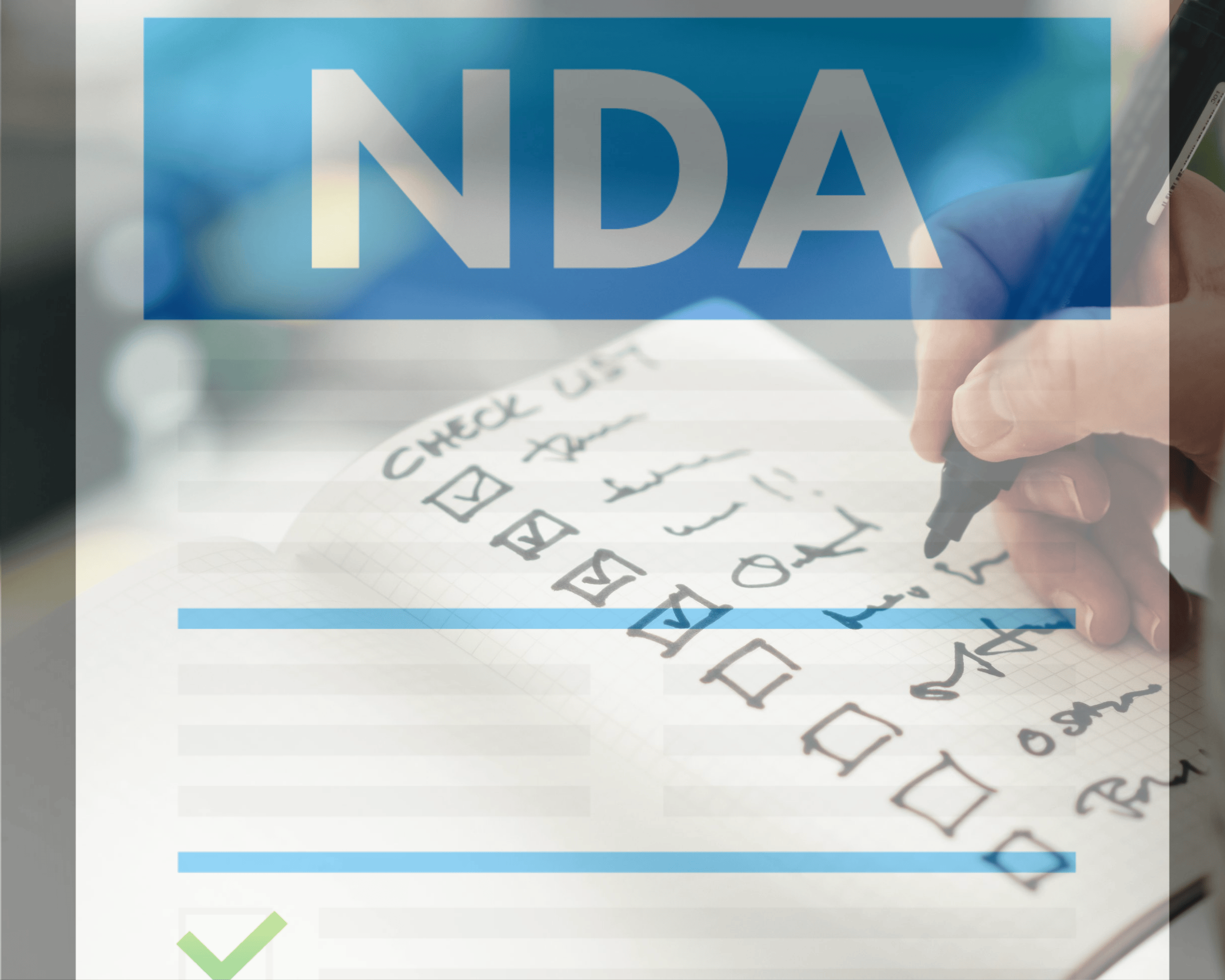Bridge loans are a fast, flexible financing solution for mergers and acquisitions (M&A). They provide quick access to capital when timing or cash flow is critical, helping buyers close deals, manage integration costs, and cover short-term funding gaps. Although they come with higher interest rates and shorter repayment terms, bridge loans are often the key to keeping transactions on track.
Key Use Cases:
- Closing Funding Gaps: Cover the time between signing a purchase agreement and securing long-term financing.
- Working Capital for Integration: Fund operational needs like IT upgrades, retention bonuses, or consultant fees during post-deal integration.
- Financing Earnouts/Deferred Payments: Meet cash flow demands tied to performance-based payments or staggered deal terms.
- Temporary Funding: Provide liquidity when permanent financing isn’t immediately available.
- Supporting Growth: Enable expansion projects like scaling operations or launching new initiatives during acquisitions.
- Debt Refinancing: Pay off high-interest or due debts of the target company at closing.
- Regulatory and Compliance Costs: Address unexpected filing fees, assessments, or compliance costs.
Quick Overview:
- Advantages: Speed, flexibility, and ability to secure deals.
- Challenges: High interest rates, short repayment timelines, and collateral requirements.
- Best For: Time-sensitive transactions, smaller acquisitions, or complex deal structures.
Bridge loans are essential for buyers navigating the fast-paced M&A space, offering immediate financial solutions to close deals and manage post-acquisition challenges effectively.
How Are Bridge Loans Used In M&A? - BusinessGuide360.com
1. Closing Funding Gaps in Acquisitions
Bridge loans play a crucial role in mergers and acquisitions (M&A), especially when there’s a timing mismatch between signing a purchase agreement and securing long-term financing. In today’s highly competitive market, sellers rarely accept financing contingencies - they want assurance that buyers can close the deal on time.
This poses a challenge for buyers who may not have sufficient cash or credit readily available. Bridge loans step in to fill this gap, providing temporary financing until permanent funding is secured.
Short-term Liquidity Needs
Bridge loans are a lifeline for acquirers facing immediate cash flow demands during the closing process. They provide quick access to funds when waiting for long-term financing isn’t an option.
Take this example: A manufacturing company aimed to acquire a competitor and agreed to terms requiring a down payment within 60 days. However, their long-term bank loan needed 90 days to process. To avoid losing the deal, they used a bridge loan to cover the interim period. Once the bank loan was finalized, the bridge loan was repaid.
This fast access to liquidity not only ensures the deal goes through but also strengthens the buyer’s financial credibility.
Facilitating Deal Completion
Bridge loans are also critical for demonstrating financial readiness to acquisition targets. In competitive bidding, certainty of funds is essential for both regulatory and practical reasons.
Sellers often scrutinize bidders’ financing plans to ensure the deal won’t collapse due to funding issues. A bridge loan commitment, especially from a reputable investment bank, provides the assurance sellers need in today’s fast-paced M&A environment.
This assurance is particularly valuable in auction settings where multiple bidders are vying for the same target. Having a bridge loan commitment in place can be the deciding factor that secures the winning bid for both corporations and private equity firms.
Flexibility for Complex Transactions
Bridge loans offer more than just immediate liquidity - they’re designed to adapt to a variety of acquisition scenarios. Whether it’s a leveraged buyout or a strategic acquisition, these loans can accommodate different transaction types.
Both corporate buyers and private equity sponsors benefit from this flexibility. Bridge loans make it possible to participate in fast-moving auctions without having permanent financing fully arranged. They’re structured to work seamlessly with various long-term financing options, such as high-yield bonds, syndicated loans, or other capital market solutions.
For instance, a tech company preparing for a Series B funding round but needing immediate capital to scale operations might secure a bridge loan against projected revenue. Once venture capital funding is confirmed, the loan can be repaid. This adaptability makes bridge loans a valuable tool for businesses with diverse financing needs.
The fee and interest rate structure of bridge loans is designed to encourage borrowers to secure permanent financing quickly, either before using the loan or soon after. This arrangement benefits both sides - buyers get the certainty needed to close deals, while lenders minimize their exposure to long-term risk.
2. Working Capital During Business Integration
Bridge loans don’t just fill funding gaps at the time of deal closure - they also play a key role in providing working capital during the crucial integration phase. After an M&A deal closes, businesses often face a challenging period where they must merge operations, systems, and even company cultures. This process can lead to unexpected cash flow issues, even for acquisitions that seemed financially strong. Bridge loans step in to supply the necessary working capital to navigate these hurdles.
Short-term Liquidity Needs
The integration phase often demands significant upfront spending - expenses that may not have been fully accounted for during the initial planning. Businesses might need immediate funds for initiatives like IT system transitions or employee retention bonuses, all while waiting for the promised synergies of the merger to materialize. In these early stages, revenue can temporarily dip as sales teams adapt to new workflows. Meanwhile, costs often spike due to overlapping functions and additional integration-related expenses, such as consultant fees for system implementation, legal costs for contract consolidation, or facility upgrades. These expenses can quickly add up and represent a major portion of the total deal value.
In addition to covering these immediate needs, bridge loans ensure that companies have the operational support they require throughout the integration process.
Support for Post-Acquisition Integration
Bridge loans provide the financial flexibility needed to execute integration plans without disrupting routine business operations. With quick access to cash, businesses can fund critical integration efforts while continuing to support day-to-day activities.
Technology integration is often one of the most expensive aspects of M&A, and bridge loans help avoid delays caused by cash flow shortages. Employee-related costs - such as retention bonuses, severance packages, and training programs for new systems or processes - also require immediate attention. Delaying these investments can lead to the loss of key personnel, which could jeopardize the integration process and reduce the overall value of the deal.
The adaptable nature of bridge loans makes them especially valuable for addressing the complexities of integration.
Flexibility in Financing Complex Deal Structures
Bridge loans are designed to meet the unique cash flow demands that arise during business integration. Unlike traditional term loans with fixed repayment schedules, bridge financing can be customized to align with the irregular cash flow patterns typical of integration. For instance, many bridge loans allow for interest-only payments in the early stages, enabling companies to conserve cash for essential integration activities. Some loans also include milestone-based draw arrangements, releasing funds as specific integration goals are achieved. This ensures financing aligns with the actual progress of the integration.
In cross-border acquisitions, where challenges like currency fluctuations and varying regulatory requirements add layers of complexity, the flexible terms of bridge loans offer a much-needed financial buffer that more rigid financing options may lack.
3. Financing Earnouts and Deferred Payments
Earnouts and deferred payments are becoming more common in M&A deals, with over 30% of U.S. middle-market transactions in 2022 including earnout provisions. These structures help reduce upfront costs and tie payments to actual performance, but they also create cash flow challenges. Bridge loans are often the solution to these challenges, as detailed below.
Ensuring Deals Close Successfully
Bridge loans are essential in guaranteeing that deals with earnout structures reach completion. When acquisitions involve deferred payments or complex earnout terms, sellers need reassurance that buyers can meet future financial obligations. Bridge loan commitments from established investment banks provide this confidence, ensuring the transaction won’t fail due to financing issues.
This assurance is particularly critical in competitive bidding scenarios, where buyers must demonstrate their ability to cover not just the initial purchase price but also deferred and contingent payments over time. A bridge loan commitment signals to sellers that payment obligations will be met, even if market conditions shift.
Meeting Short-Term Liquidity Demands
Earnouts and deferred payments can create unpredictable cash flow needs, even for financially strong buyers. Bridge loans offer immediate access to capital, which is crucial when earnout milestones are met earlier than expected or when multiple deferred payments overlap.
Take, for instance, a manufacturing firm acquiring a competitor with earnout payments tied to revenue targets over 18 months. If the acquired business exceeds expectations and triggers payments within the first six months, the buyer may need quick access to funds. Bridge loans provide the necessary liquidity, giving the buyer time to secure long-term financing or use increased revenue from the combined operations to cover these payments.
With maturities typically lasting a year or less, bridge loans align well with the timelines of earnout and deferred payment structures. This makes them an efficient tool for addressing the cash flow gaps these arrangements can create.
Adapting to Complex Deal Structures
Bridge loans also shine in their ability to adapt to intricate deal timelines. Unlike long-term financing, which often comes with fixed disbursement schedules, bridge loans can be tailored to match specific earnout triggers or deferred payment deadlines. This adaptability is invaluable when payments depend on performance milestones that may occur unpredictably.
Investment banks offering bridge financing often structure these loans to minimize funding risks while ensuring borrowers can handle fluctuating payment obligations. For example, a bridge loan might include milestone-based draws, releasing funds only when certain earnout conditions are met. This ensures that capital is available exactly when it’s needed.
These loans also complement other financing tools, allowing for layered capital structures that align with specific payment requirements. In some cases, businesses use bridge loans as part of a broader debt restructuring strategy while negotiating long-term financing terms that better align with their earnout schedules.
A U.S. manufacturing company acquired a competitor with a $10 million earnout payable over 18 months. To fund the first earnout payment, the buyer used a $3 million bridge loan, which was later repaid after securing long-term financing through a syndicated loan facility. The investment bank facilitating the deal arranged both the bridge and permanent financing, ensuring the acquisition and earnout payments proceeded smoothly.
This example highlights how bridge loans allow companies to act quickly on acquisition opportunities without being derailed by cash flow constraints. By providing immediate funding and bridging the gap until permanent financing is secured, these loans ensure that earnout obligations don’t jeopardize otherwise successful transactions.
4. Temporary Funding Before Long-Term Financing
Bridge loans play a key role when companies need quick access to capital but haven't locked in permanent financing. While traditional financing options typically offer lower rates, they often can't match the speed required to close deals. Bridge loans fill this gap, ensuring acquisitions stay on track while paving the way for smoother deal execution and integration.
Short-Term Liquidity Needs
The fast approval process for bridge loans makes them indispensable in time-sensitive situations. Unlike traditional bank loans or syndicated facilities - which can take months to finalize due to lengthy due diligence and documentation - bridge loans provide the necessary funds in just 2-4 weeks. This speed is critical in M&A markets, where sellers often expect financing commitments within days or weeks.
Bridge loans typically have a term of 6-12 months and carry higher interest rates - usually 200-500 basis points above the prime rate. While this premium may seem steep, it’s often a small price to pay for securing a strategic acquisition that might otherwise slip away to a competitor. Companies frequently use bridge loans when they anticipate better long-term financing rates in the future but need immediate liquidity to act decisively.
Facilitating M&A Deal Completion
In competitive M&A situations, bridge financing can be the difference between winning and losing a deal. Acquisition targets often come with strict deadlines, and sellers look for buyers who can provide immediate proof of financing. A bridge loan commitment from a reputable lender reassures sellers while giving buyers the time to negotiate better permanent financing terms after the deal closes.
Bridge loans also offer flexibility for structuring deals that don’t fit the mold of traditional financing. For example, they can accommodate businesses with seasonal cash flows or companies undergoing transformations that might deter conventional lenders. Once the acquisition is completed and the new entity stabilizes, buyers can approach permanent lenders with a stronger financial profile, often securing better terms than they could have at the outset.
Supporting Post-Acquisition Integration
Even after the acquisition is finalized, bridge loans continue to provide critical support. These funds often cover essential post-closing initiatives, such as integrating operations, aligning teams, and addressing immediate working capital needs. This allows management to focus on operational priorities rather than scrambling for additional financing during the crucial early months of integration.
The temporary nature of bridge loans also gives companies breathing room to fully evaluate the performance of the combined entity. After 6-12 months, buyers are in a better position to make informed decisions about their long-term capital structure, debt levels, and financing options. This approach often leads to more favorable permanent financing terms than would have been possible at the time of the acquisition.
Flexibility for Complex Deal Structures
Bridge loans shine in situations where traditional financing falls short, particularly with complex or unconventional deal structures. These might include transactions with staggered closing dates, distressed assets, or acquisitions requiring an immediate capital infusion to stabilize operations. Traditional lenders often hesitate in such scenarios, making bridge loans the go-to solution.
These loans can be tailored to match specific deal requirements, with repayment schedules aligned to expected cash flows, deferred interest payments, or loan amounts adjusted based on integration milestones. Additionally, bridge loans give buyers the flexibility to explore a range of permanent financing options once the combined entity’s performance and market conditions are clearer. This adaptability often results in better long-term financing terms and improved overall transaction outcomes, complementing the liquidity and strategic advantages they bring to M&A strategies.
5. Funding Expansion and Growth Projects
Bridge loans play a crucial role in driving growth during mergers and acquisitions (M&A) by providing quick access to capital for expansion initiatives. When businesses identify opportunities that require immediate action - like scaling operations or launching new projects - bridge financing offers the speed and adaptability that traditional funding often lacks. This allows companies to seize time-sensitive opportunities and maintain momentum throughout the acquisition process. The added liquidity not only supports growth but also enhances the overall appeal of the deal.
Short-Term Liquidity Needs
Expansion projects often demand immediate funding to capitalize on market opportunities. Bridge loans are particularly helpful in scenarios where companies need to scale production, enter new markets, or launch products ahead of competitors during the M&A process.
While bridge loans typically carry higher costs, they are often justified by the rapid revenue gains generated from these growth initiatives. Businesses frequently use this type of financing to fund critical needs like equipment purchases, inventory expansion, or facility upgrades. The short-term nature of bridge loans makes them ideal for projects designed to deliver quick returns or set the stage for larger strategic investments.
Additionally, bridge loans provide essential working capital, enabling companies to scale quickly without dipping into existing cash reserves. This financial flexibility is especially valuable during M&A transactions, where maintaining liquidity can be a game-changer.
Facilitation of M&A Deal Completion
Bridge financing focused on growth can also make a company more attractive to potential buyers or merger partners. By actively funding and executing expansion projects, businesses can demonstrate a strong growth trajectory during negotiations. This can help bridge the gap between current performance and future potential, reducing buyer risks and potentially leading to better deal terms and faster closings.
Strategically timed growth initiatives funded by bridge loans can also align with M&A schedules. By launching these projects early in the process, companies may showcase measurable results before final valuations are set, strengthening their negotiating position.
Support for Post-Acquisition Integration
The benefits of bridge loans extend beyond deal closure. After an acquisition, these funds can continue driving growth by supporting initiatives that enhance market presence and operational efficiency. Merged entities often uncover opportunities to leverage shared resources, customer bases, or operational strengths. Bridge financing allows businesses to act on these opportunities quickly, avoiding delays tied to traditional financing approvals.
Post-acquisition, bridge loans can fuel revenue growth through targeted efforts like expanded sales strategies, marketing campaigns, and system integrations. These initiatives help the newly combined business realize its full potential faster.
Flexibility in Financing Complex Deal Structures
Another advantage of bridge loans is their adaptability in handling complex financing needs. Lenders often customize these loans for unique growth scenarios that traditional financing might overlook - whether it’s helping seasonal businesses prepare for peak demand, funding product development for tech companies, or supporting geographic expansion for service providers.
Flexible repayment options, such as interest-only periods or milestone-based schedules, ease financial pressures during critical growth phases. This flexibility allows businesses to manage cash flow effectively while pursuing aggressive expansion strategies.
Bridge loans can also be paired with other financing options to create comprehensive funding solutions. By addressing immediate liquidity needs, they give companies the breathing room to explore long-term financing alternatives, ensuring a balanced approach to funding growth during and beyond the M&A process.
sbb-itb-a3ef7c1
6. Debt Refinancing During M&A Transactions
Bridge loans play a key role in ensuring smooth debt refinancing during mergers and acquisitions (M&A). By providing immediate funds, they help settle existing debts at the time of closing, keeping the transaction on track while buyers arrange for long-term financing.
Addressing Short-Term Liquidity Needs
When a target company has debt that’s either due soon or comes with high interest rates, bridge loans allow the buyer to clear those liabilities at closing. This approach buys time to secure lower-cost, long-term financing later on . It also prevents operational interruptions that could arise if lenders impose stricter terms or call in loans. Additionally, bridge loans offer the flexibility to consolidate various debts into a single, more manageable obligation during the interim period.
Supporting Deal Completion and Post-Acquisition Stability
In competitive M&A scenarios, bridge loans eliminate financing contingencies, which can make a buyer’s offer more attractive. Investment banks often include "take-out" provisions in these loans to encourage borrowers to secure permanent funding quickly, reducing risk for lenders and ensuring a smoother closing process.
After the deal closes, bridge loans provide breathing room for management to secure permanent financing under better conditions. As the newly combined company stabilizes, this interim period can be used to restructure the capital stack with lower interest rates or longer repayment terms.
Handling Complex Financing Scenarios
Bridge loans are particularly useful in navigating intricate refinancing needs. They can be customized to address partial buyouts, staggered payments, or multiple layers of existing debt, aligning with the acquirer’s timeline and cash flow expectations .
| Aspect | Bridge Loan for Debt Refinancing | Traditional Term Loan |
|---|---|---|
| Term Length | Short-term (≤1 year) | Long-term (3–10+ years) |
| Interest Cost | Higher rates and fees | Lower rates and fees |
| Primary Purpose | Interim liquidity; debt consolidation | Stable, ongoing capital |
| Market Risk | Higher if refinancing is delayed | Lower |
| Deal Flexibility | High (handles complex structures) | Moderate |
In competitive bidding, the ability to refinance existing debt quickly often gives buyers a crucial edge. Sellers value the assurance of a timely closing, and this refinancing flexibility aligns with broader deal strategies, helping companies transition seamlessly to long-term financing.
7. Meeting Regulatory and Compliance Costs
Mergers and acquisitions (M&A) often bring unexpected regulatory hurdles and compliance expenses that can put a strain on cash flow at critical stages. Here's how bridge loans can help businesses tackle these challenges effectively throughout an M&A transaction.
Short-Term Liquidity Needs
Regulatory compliance in M&A often comes with surprise costs - think environmental assessments, antitrust filings, or license fees. These expenses can pop up suddenly and may not align with the timelines of traditional financing. In such cases, bridge loans step in to provide quick access to funds, ensuring these obligations are met without disrupting the deal's progress.
Long-term financing solutions typically take time to arrange, but regulatory deadlines don’t wait. Bridge loans fill this gap, supplying the capital needed to meet compliance requirements on time and keep the transaction on track.
Facilitating Deal Completion
Regulatory filings and approvals often come with upfront costs that, if unmet, can delay the closing of an M&A deal. Bridge loans provide the necessary funds to cover these expenses, allowing the deal to move forward without unnecessary delays.
Additionally, if a regulatory review uncovers compliance issues, having immediate access to funds through a bridge loan enables companies to address these problems swiftly, reducing the risk of derailing the transaction.
Supporting Post-Acquisition Integration
Once the deal is finalized, the costs don’t stop. Companies often face ongoing compliance-related expenses, such as updating operating licenses, revising regulatory filings to reflect the new ownership structure, or rolling out enhanced compliance systems across the merged organization. Bridge loans can help cover these short-term costs, allowing businesses to focus on integration while securing more permanent financing solutions.
Flexibility for Evolving Costs
Regulatory costs can shift as an M&A deal progresses, making flexibility essential. Bridge loans often feature adaptable draw periods, letting businesses access funds as needed based on key milestones. This prevents over-borrowing while ensuring sufficient capital is available to address evolving compliance demands.
Important Factors and Risks to Consider
When using bridge loans in mergers and acquisitions (M&A), it's essential to weigh the risks alongside the benefits. A clear understanding of these factors can help businesses decide if this type of financing fits their transaction goals.
Interest Rates and Costs
Bridge loans often come with higher interest rates compared to traditional long-term financing, typically ranging from 8% to 15% per year. These rates reflect the short-term nature and higher risk associated with this type of loan. Borrowers should also plan for origination fees, which generally fall between 1% and 3% of the loan amount, as well as potential exit fees for early repayment.
Costs can climb even higher if the loan repayment extends beyond the agreed term. Many bridge loans include escalation clauses, which increase interest rates after specific periods, adding urgency to secure permanent financing.
Collateral and Security Requirements
To reduce their risk, most bridge lenders require collateral. This can include business assets, real estate, or even personal guarantees from business owners. In M&A deals, lenders often place liens on the target company’s assets or demand additional security from the acquiring company.
Repayment Timeline Pressures
Bridge loans are designed for short repayment terms, usually between 6 and 24 months. This tight timeline creates pressure to either secure permanent financing or generate sufficient cash flow to repay the loan. Any delays in the acquisition process or integration of the acquired business can quickly turn the loan into a significant challenge.
Market and Economic Risks
Economic uncertainty or changing interest rates can complicate repayment. For example, a downturn in the economy or tighter lending standards may delay access to permanent financing, increasing costs. Additionally, if the acquired business doesn't perform as expected during the loan term, it could make securing favorable long-term financing more difficult.
Comparison of Short-Term Financing Options
| Financing Type | Typical Interest Rate | Loan Term | Collateral Required | Best For | Key Drawback |
|---|---|---|---|---|---|
| Bridge Loans | 8% - 15% | 6 - 24 months | High (business assets, real estate) | Large M&A transactions, acquisition gaps | High cost, short timeline pressure |
| Lines of Credit | 5% - 12% | Revolving, 1-3 years | Moderate (business assets) | Working capital, flexible funding needs | Lower borrowing limits, variable rates |
| Merchant Cash Advances | 15% - 50% APR | 3 - 18 months | Low (future receivables) | Quick access, poor credit situations | Extremely high cost, daily payments |
Due Diligence Considerations
A well-thought-out exit strategy is critical for repaying a bridge loan. This includes having concrete plans for securing permanent financing, realistic timelines for achieving integration milestones, and backup plans in case the primary repayment strategy fails.
It's also important to assess cash flow projections during the loan period. Consider integration costs, potential disruptions in revenue, and ongoing debt payments. Running various cash flow scenarios can help identify potential risks before they escalate into significant problems.
Legal and Documentation Complexity
Carefully review the legal terms of the loan. Bridge loan agreements often come with restrictive covenants that can limit business operations during the loan term. These restrictions might include caps on additional borrowing, limits on capital expenditures, or rules about changes to business operations. Understanding these limitations upfront can help avoid conflicts during the integration process.
Additionally, the legal and documentation process for bridge loans can be intricate. Coordinating between the acquiring company, the target company, and multiple lenders often adds time and legal costs to the transaction. Proper preparation can help streamline this process and prevent delays.
How Clearly Acquired Simplifies Bridge Loan Access
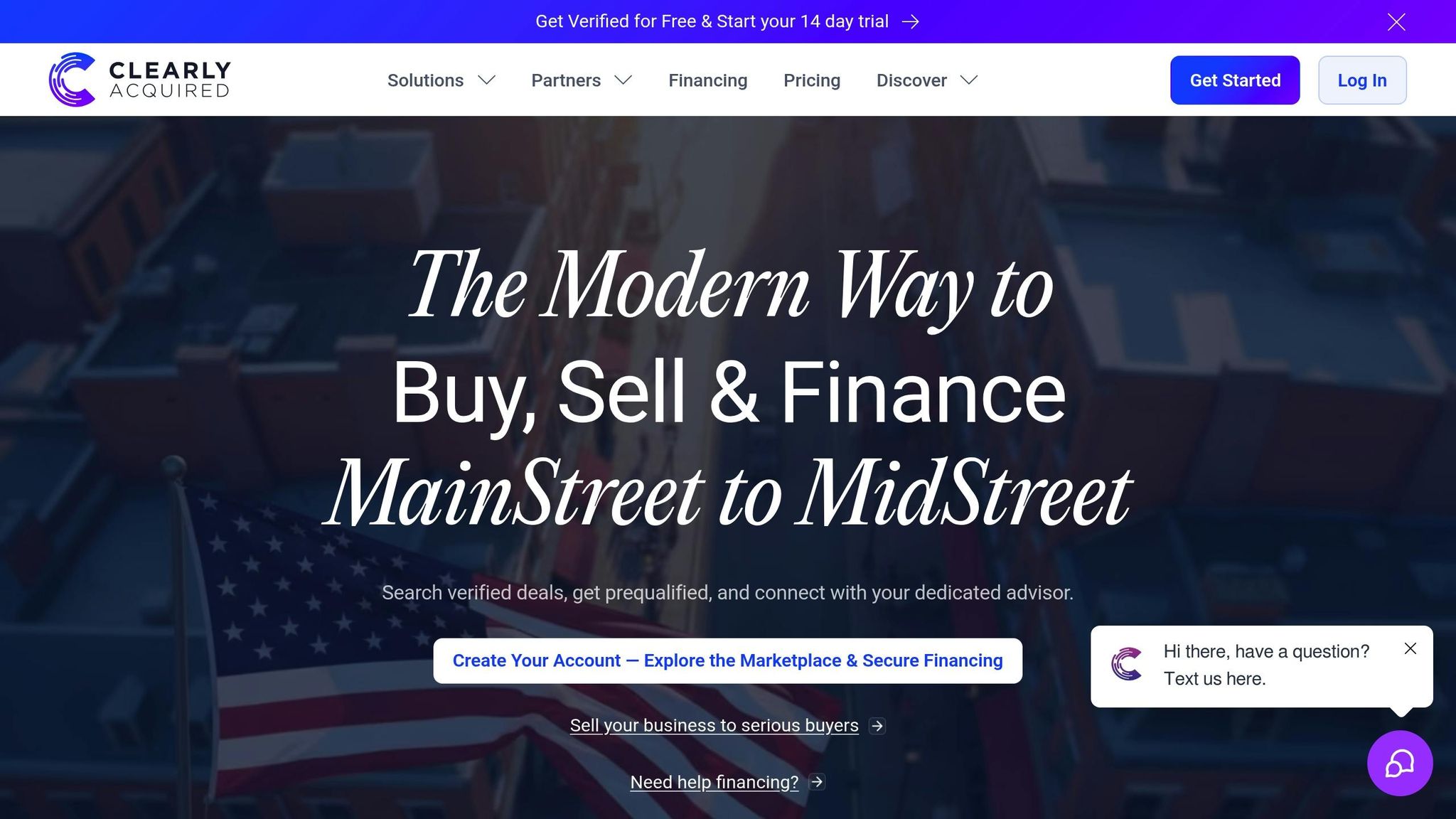
Clearly Acquired makes securing bridge loan financing for M&A transactions easier by offering an integrated platform that connects buyers, sellers, and lenders in the Main Street to lower mid-market space. This seamless approach delivers several key advantages.
AI-Driven Lender Matching and Pre-Qualification
Using advanced AI and Plaid integration, the platform matches buyers with lenders based on factors like deal size, industry, and collateral needs. This automated system speeds up the pre-qualification and approval process, giving buyers access to multiple financing options through a single interface. Instead of spending weeks contacting individual lenders, buyers can quickly find the right match for their needs, saving both time and effort.
Centralized Deal Flow and Document Management
Clearly Acquired simplifies document sharing with secure data rooms that include permission controls. This ensures all parties work from a single, up-to-date source, eliminating confusion caused by multiple document versions. Additionally, the platform's pipeline management tools allow buyers to track the status of financing applications across various lenders in one place. This keeps the process moving smoothly during the critical bridge loan approval phase.
Flexible Financing and Due Diligence Tools
The platform supports flexible financing options, such as seller notes, earnouts, and mezzanine capital, while also integrating tools for valuation and due diligence. An AI-powered business valuation tool helps buyers and lenders determine if bridge loan amounts align with the actual value of the business by analyzing financial data, industry benchmarks, and market trends. Buyers also gain insights into risks and opportunities through growth assessments and business audits, enabling them to address potential obstacles before they become delays.
Access to a Trusted Partner Network
Beyond financing tools, Clearly Acquired connects users to a network of business brokers and M&A advisors who specialize in bridge loan requirements. These experts help buyers structure deals effectively. The platform also facilitates connections with investors and co-investors, offering additional equity options for buyers who need to reduce debt exposure or make higher down payments.
Educational Tools and Market Insights
Clearly Acquired provides practical resources, including guides on acquisition strategies and financing options, as well as reports on market trends and lending conditions. These materials help users understand costs, timelines, and interest rate environments, giving them a clearer picture of how bridge loans fit into their overall M&A plans. By setting realistic expectations, the platform ensures that bridge loans become a strategic part of the acquisition process, not just a hurdle to overcome.
With these tools and resources, Clearly Acquired helps buyers confidently navigate the bridge loan process, aligning financing with their broader M&A goals.
Conclusion
Bridge loans play a pivotal role in facilitating smooth M&A transactions, addressing a variety of financial needs that arise during the process. They come into play in seven key scenarios: closing funding gaps, providing working capital during integration, financing earnouts, offering temporary funding before securing long-term solutions, supporting expansion efforts, refinancing existing debt, and covering regulatory expenses. These short-term loans help buyers overcome timing challenges and prevent deals from faltering due to cash flow issues. However, their higher interest rates and shorter repayment periods demand careful planning and a well-thought-out exit strategy to avoid potential financial stress.
Modern financing platforms have revolutionized access to bridge loans by removing traditional hurdles and connecting buyers to suitable lenders more efficiently. This streamlined approach ensures businesses can secure the funding they need without unnecessary delays.
With the right mix of financial flexibility, expert advice, and market insights, buyers can leverage bridge loans to navigate M&A transactions effectively. When used strategically, these loans become indispensable tools for achieving growth and success in the Main Street to lower mid-market arena while managing risks prudently.
FAQs
What are the key benefits and risks of using bridge loans in M&A deals?
Bridge loans come with several advantages in mergers and acquisitions. They provide swift access to funds, helping to bridge financial gaps and ensure acquisitions proceed without delays tied to securing long-term financing. This quick infusion of capital can be crucial for maintaining smooth operations during periods of transition.
That said, there are potential downsides to weigh. These loans typically carry higher interest rates and fees, making them a pricier option compared to traditional financing. They often require collateral, which could be at risk if repayment deadlines aren't met. Plus, their short-term nature means that failing to secure permanent financing in time could create additional financial pressure.
How do bridge loans help cover costs during post-acquisition integration?
Bridge loans offer businesses swift access to funds, making it easier to handle crucial post-acquisition expenses like restructuring, upgrading systems, and adjusting operations. These loans act as a short-term financial bridge, covering the period between finalizing an acquisition and securing more permanent financing.
With immediate funding in place, businesses can keep operations running smoothly, alleviate cash flow challenges, and ensure a seamless transition. This financial support allows the newly acquired business to stabilize and position itself for growth without unnecessary interruptions.
When is a bridge loan a better choice than traditional financing in an M&A deal?
A bridge loan can be a handy solution during an M&A deal, especially when timing and adaptability are key. These short-term loans are crafted to address temporary funding gaps - like when there's a lag between buying and selling or when quick access to working capital is needed to finalize the deal.
What sets bridge loans apart from traditional financing is their quicker approval process and fewer hurdles. This makes them perfect for situations where every moment counts, allowing businesses or buyers to secure funds promptly and keep the transaction moving forward without interruptions.



















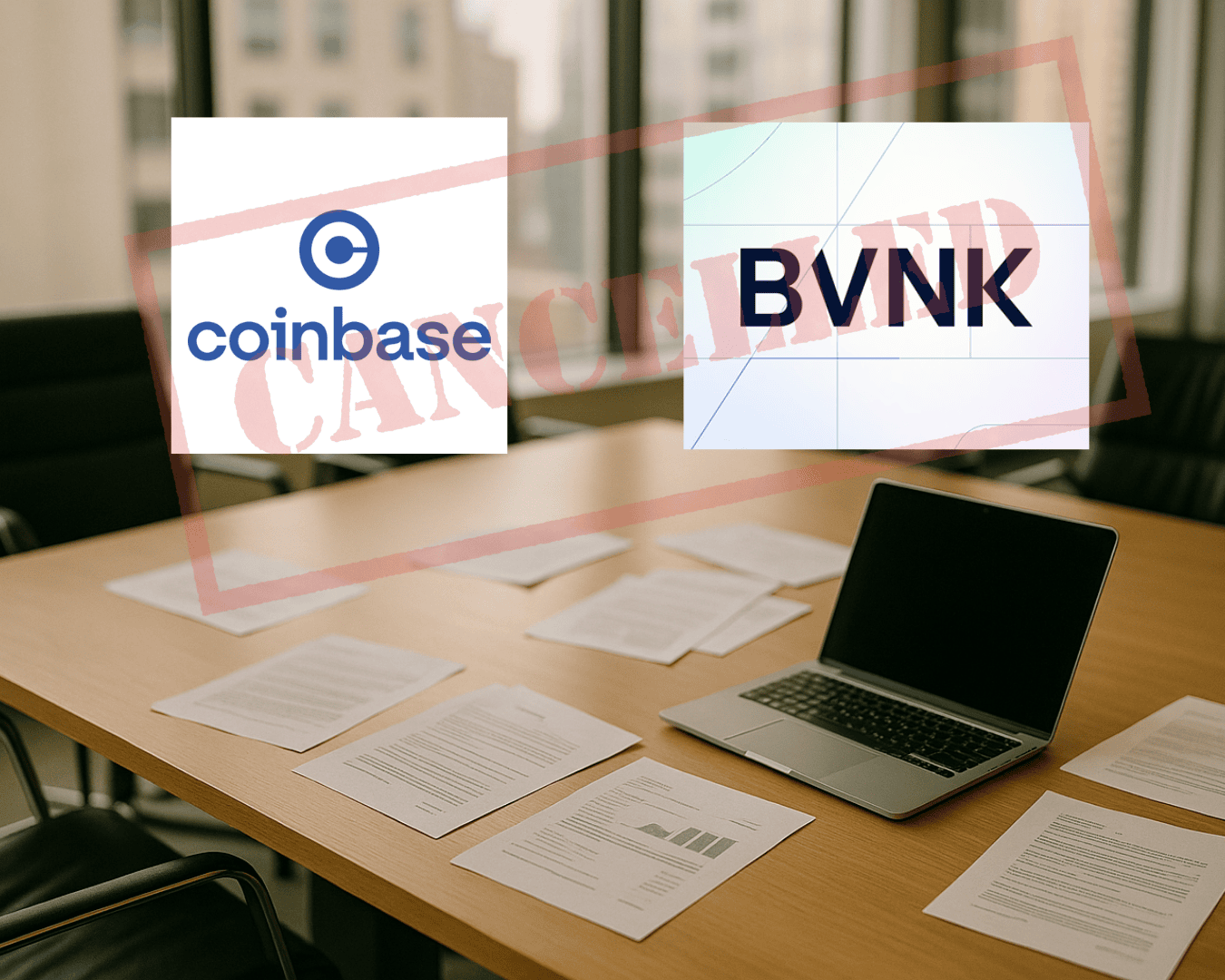









.png)




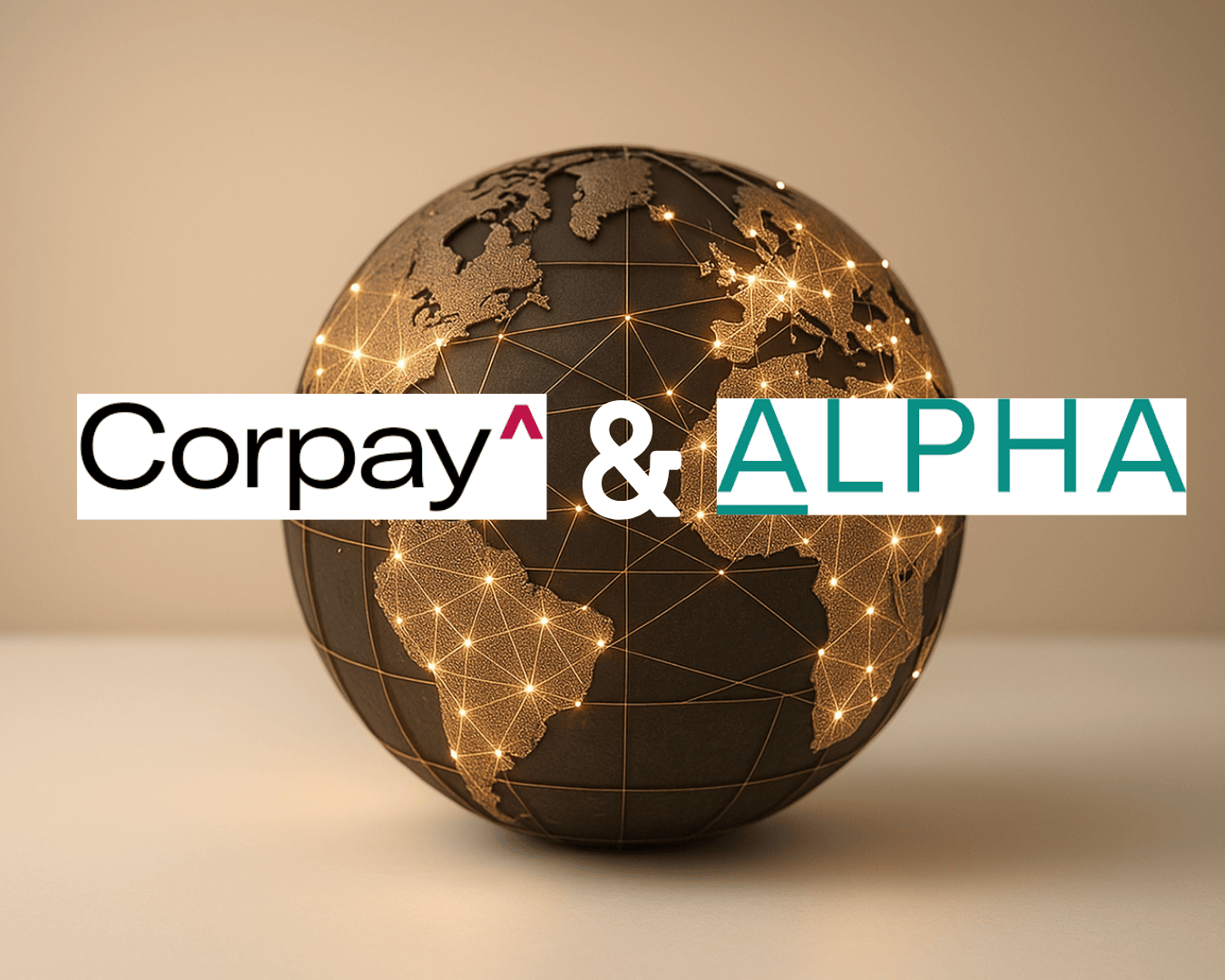























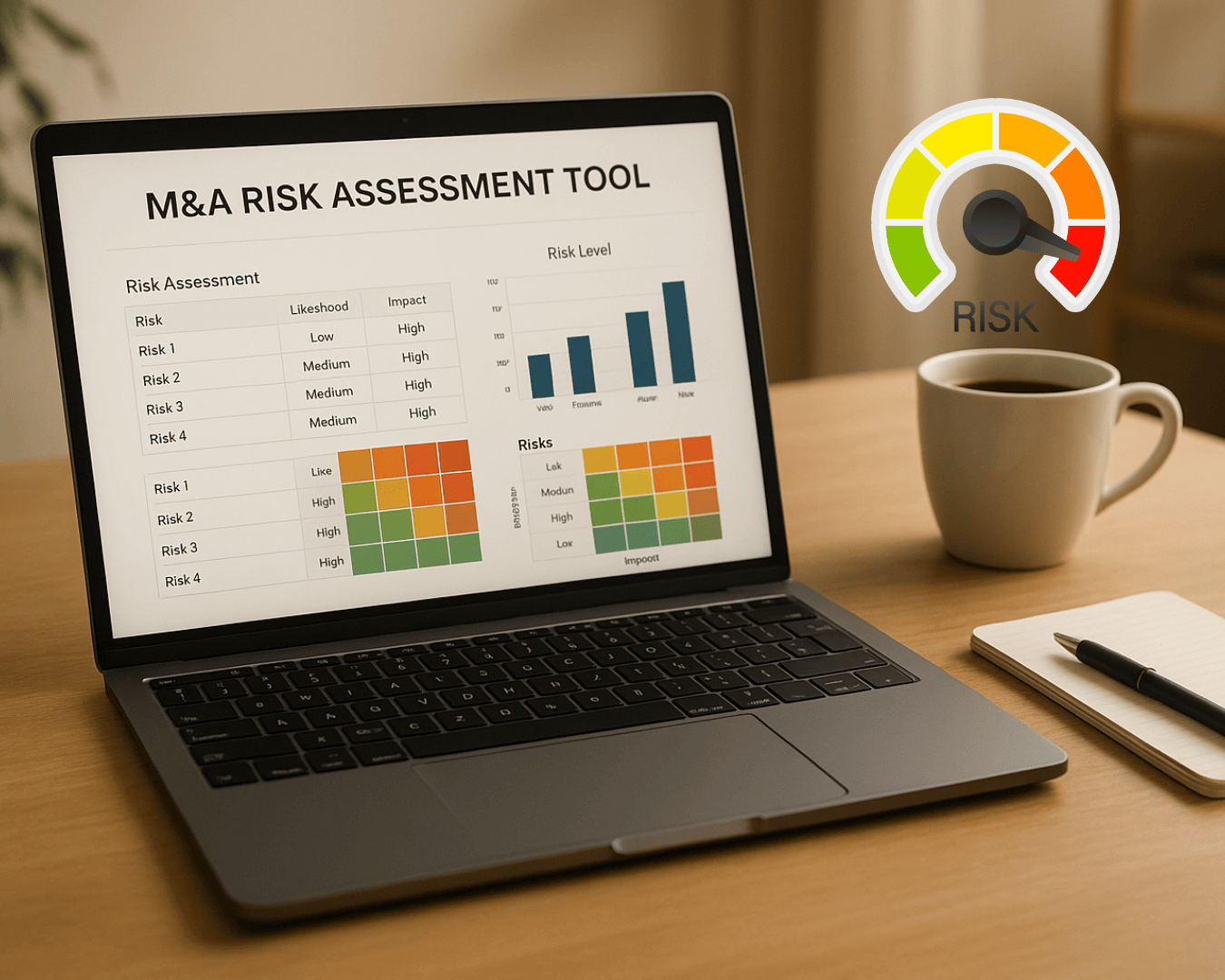











%20Loan%20Application%20Checklist.png)


